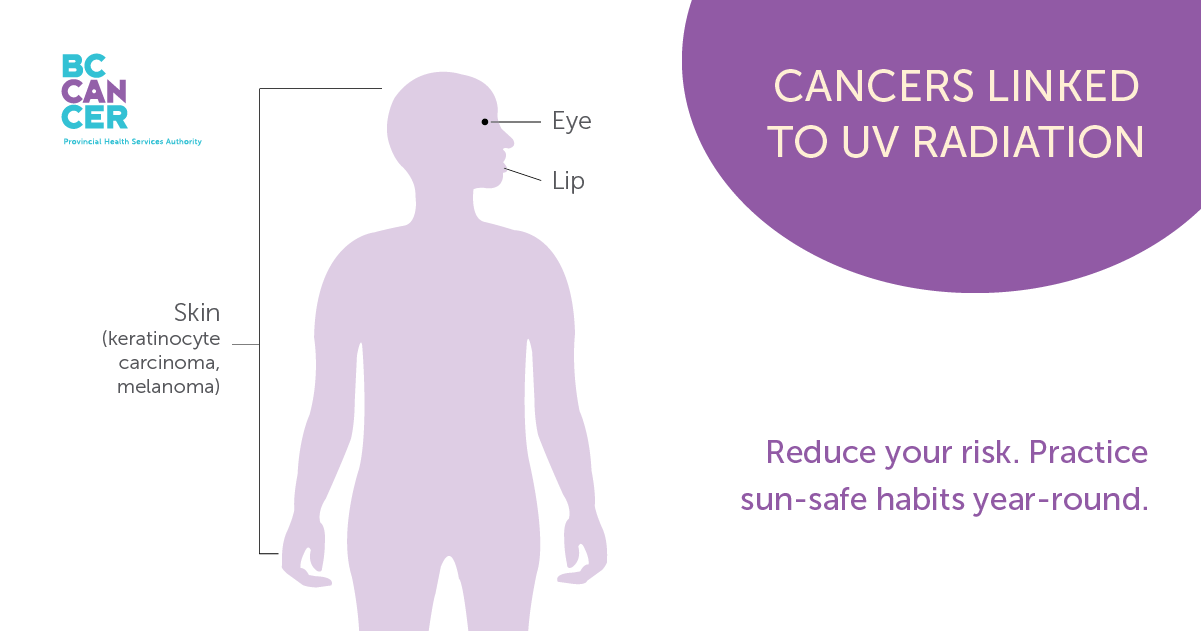About 90 per cent of skin cancers are associated with exposure to ultraviolet (UV) radiation from the sun or tanning beds.
Sunlight consists of three types of harmful rays: ultraviolet A (UVA), ultraviolet B (UVB) and ultraviolet C (UVC) rays. UVA and UVB rays are the two types that reach the Earth’s surface and affect us the most. Most tanning bed lamps also use a combination of UVA and UVB rays, and can give off up to 15 times as much UV radiation as the sun.
- UVA rays penetrate deep into our skin. These rays are responsible for long-term skin damage, such as dark spots, wrinkles and premature ageing.
- UVB rays reach the outer layer of our skin. These rays cause redness, burning and contribute more to the development of skin cancer.
Unprotected exposure to both UVA and UVB causes harm to our skin. Too much of it can damage the DNA in our skin cells. While your body can repair some of this damage, it can't repair all of it. If enough DNA damage builds up over time, it can cause cells to start growing out of control, which can lead to skin cancer.
Exposure to UV radiation can increase your chances of developing skin cancer, as well as cancer of the lip and eye.

UV radiation can cause three types of skin cancer: keratinocyte carcinoma, which includes basal cell and squamous cell carcinomas, and melanoma.
Melanoma is less common than the other types but is the most dangerous form. Most people know melanoma as a mole that has gone "bad" or looks strange in shape and/or colour. If left untreated or caught in a late-stage, melanomas are more likely to spread to other parts of the body, making them difficult to treat.
It's a common misconception that a “base tan” is good to have before going on vacation to help prevent a sunburn. The truth is that there’s no such thing as a base tan or even a healthy tan. Tanning is the skin's response to damage from the sun. Any tan is a sign that your skin has had too much exposure to UV radiation.
A sunburn is evidence of even more damage to the skin. It can cause immediate pain and discomfort, but it can also hurt you in the long run. Having a history of sunburns—mild or severe—increases your risk of developing skin cancer.
Vitamin D has many health benefits, and while not conclusive, some research has shown that having adequate levels of it may help protect against certain cancers.
People tend to think of sunshine when they think of vitamin D, and with good reason. When UV rays touch the skin, this triggers the creation of vitamin D. It doesn’t mean you have to spend countless hours soaking in the rays—you can get your daily dose of vitamin D simply by standing or walking outside without a hat and with your arms exposed for about 10 to 15 minutes.
Wherever possible, it’s better to get your fill of vitamin D from foods (e.g., egg yolks, fortified low-fat milk) and, if necessary, through supplements.
